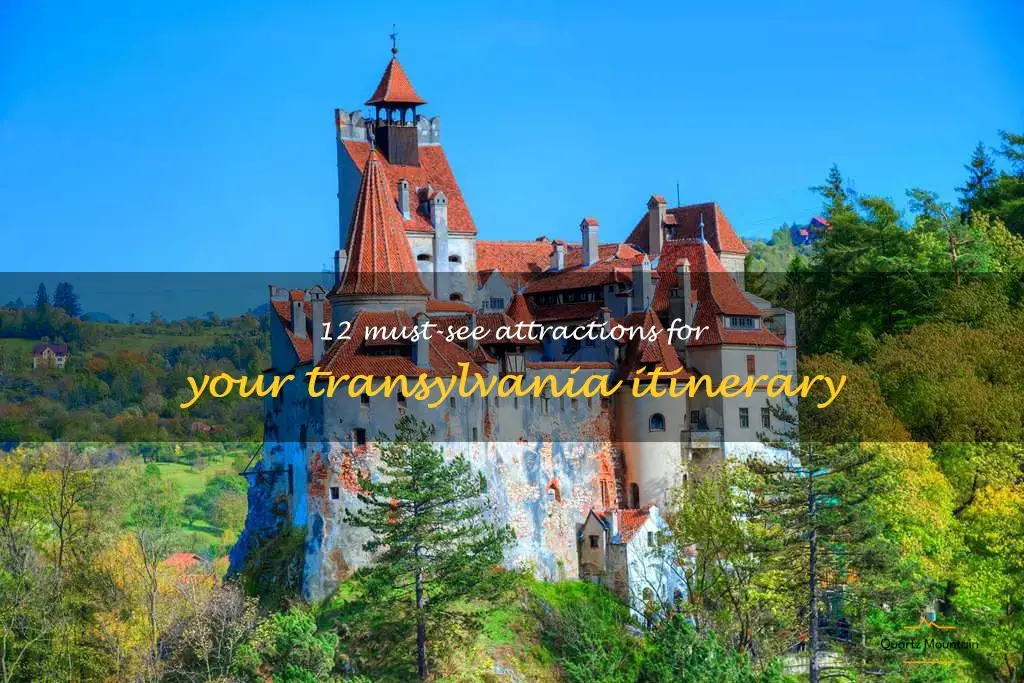
Nestled in the heart of Romania, Transylvania is a land of mysterious castles, medieval towns, majestic mountains, and dark legends. Whether you're a history buff, a nature lover, or a vampire aficionado, this region has something for you. From Gothic fortresses to natural wonders, Transylvania offers a plethora of attractions that will leave you spellbound. In this article, we've rounded up 12 must-see destinations that should be on your bucket list when planning your Transylvania itinerary. So get ready to explore the best of Transylvania and uncover its fascinating history and culture!
| Activity | Description |
|---|---|
| Visit Dracula's Castle | Explore the medieval fortress and learn about the history and legends of the iconic Bran Castle. |
| Hike in the Carpathian Mountains | Take in the stunning scenery and breathtaking views of the Carpathian Mountains while hiking along its many trails. |
| Discover the Turda Salt Mine | Descend into the depths of the earth and explore the underground world of the Turda Salt Mine, complete with a Ferris wheel and boating on a salt lake. |
| Explore Saxon Villages | Discover the unique architecture and history of the Saxon villages scattered throughout Transylvania, such as Sighisoara, Biertan, and Viscri. |
| Try Traditional Food | Sample the delicious dishes of Transylvania, such as sarmale (cabbage rolls stuffed with meat and rice), mici (grilled minced meat rolls), and cozonac (sweet bread filled with nuts and dried fruits). |
| Visit the Merry Cemetery | Experience the colorful and unique Merry Cemetery in the village of Sapanta, where gravestones are decorated with vibrant images and humorous epitaphs. |
| Take a Ghost Tour | Explore the spooky side of Transylvania with a ghost tour that delves into the region's history and legends of vampires and other supernatural beings. |
| Relax in Thermal Baths | Unwind and rejuvenate in one of the many thermal baths scattered throughout Transylvania, such as the Baile Felix, Sovata, or Tusnad resorts. |
| Attend a Festival | Join in on the fun and lively celebrations of Transylvanian festivals, such as the Sighisoara Medieval Festival, the Alba Iulia Citadel Music Festival, or the Rosia Montana Music Festival. |
What You'll Learn

Bran Castle
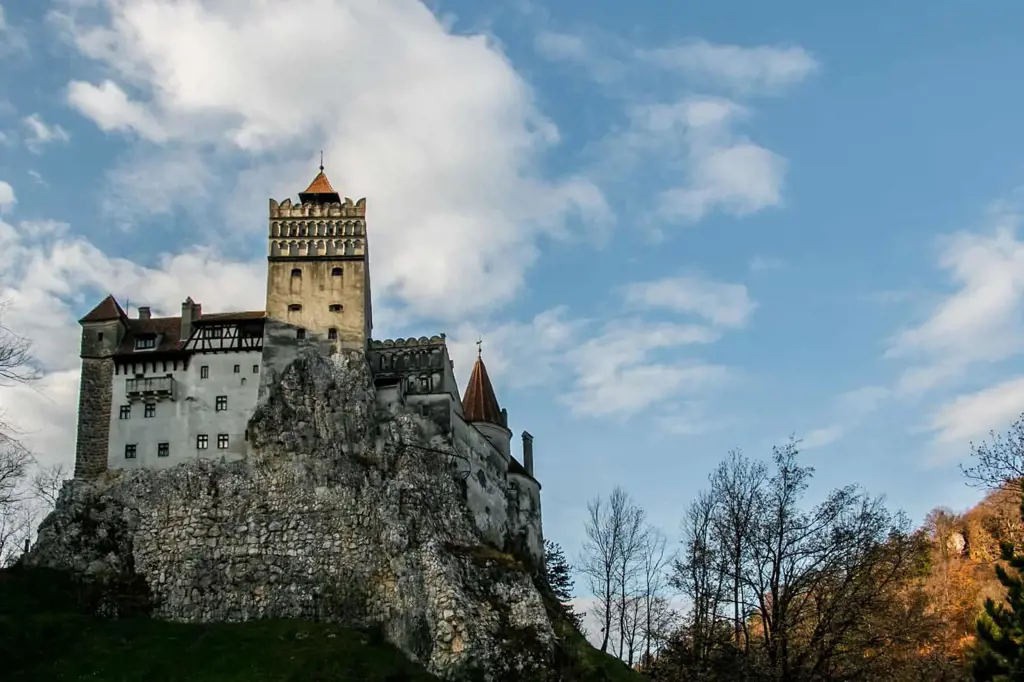
| Characteristic | Description |
|---|---|
| Name | Bran Castle |
| Type | Castle in Bran, Romania |
| Website | Go to website |
| Rating / Review count | 4.4 / 79,979 |
| Address | Strada General Traian Moșoiu 24, Bran 507025, Romania |
| Phone | +40 268 237 700 |
| Hours | Thursday - opens at 9 AM and closes at 6 PM Friday_good_friday - opens at 9 AM and closes at 6 PM Saturday - opens at 9 AM and closes at 6 PM Sunday_orthodox_easter - opens at 10 AM and closes at 6 PM Monday - opens at 10 AM and closes at 6 PM Tuesday - opens at 9 AM and closes at 6 PM Wednesday - opens at 9 AM and closes at 6 PM |
| Profiles |  |
Nestled in the misty hills of the Carpathians, Bran Castle conjures up images of Dracula and Gothic horror. However, this spectacular castle is far more than a simple horror story. It is one of Romania's most visited attractions and is steeped in rich history and fascinating cultural significance.
Located near Brasov, in the heart of Transylvania, Bran Castle was built in the early 14th century. Initially, the castle served a defensive purpose, protecting the borders of Transylvania from Ottoman invasions. However, it became famous worldwide thanks to the novel Dracula, written by Bram Stoker in 1897. The author chose Bran Castle to be the home of his mythical vampire because of its mysterious aura and eerie feel.
Although Dracula himself is not real, Vlad the Impaler, the historical figure that inspired Stoker's legend, actually had a connection to the castle. Vlad, who ruled Walachia in the fifteenth century, may have visited Bran Castle during his military campaigns. In any case, it is certain that he used it to blockade the pass to Transylvania, which explains the legend that he was imprisoned there.
Nowadays, Bran Castle is a museum that attracts thousands of visitors every year. Its gothic architecture, breathtaking landscape and fascinating history make it an unforgettable experience. Guided tours provide visitors with an insight into the castle's past and display its impressive collection of furniture, art and weapons. Visitors can enjoy stunning views of the surrounding countryside, ranging from the towering peaks of the Carpathians to the green valleys below.
In addition to its historical significance, Bran Castle still inspires an air of mystery and legend. It has been the scene of numerous TV and movie productions, including the 1979 screen adaptation of Dracula, starring Frank Langella. It is surrounded by tales of haunted rooms, secret tunnels and mysterious figures lurking in the shadows.
In conclusion, Bran Castle is undoubtedly one of Transylvania's best-known symbols. Its rugged beauty, fascinating history and enduring cultural significance make it a must-see for anyone visiting Romania. Beyond the myths and legends, it is a treasure trove of art, history and stunning scenery. Its enigmatic charm is sure to leave visitors spellbound, long after they have left its halls.
13 Fun and Exciting Things to Do in San Mateo
You may want to see also

Rasnov Fortress
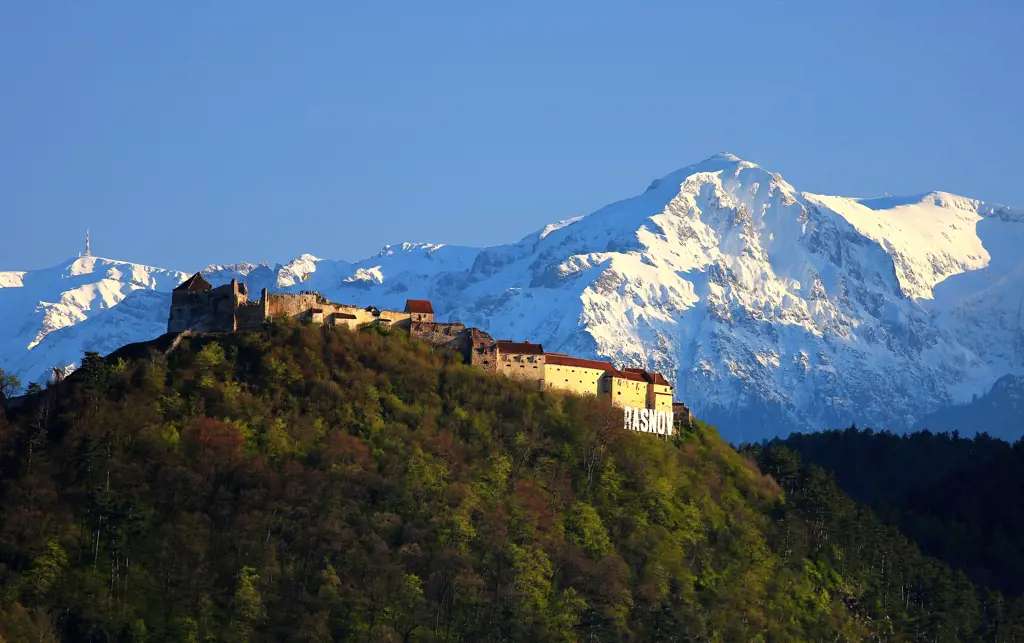
| Characteristic | Description |
|---|---|
| Name | Râșnov Citadel |
Located in the heart of Transylvania, Rasnov Fortress stands tall as a symbol of the region's rich history and cultural heritage. Built in the 13th century by the Teutonic Knights, the fortress has witnessed several waves of invaders and sieges, emerging victorious each time.
The fortress served as an important strategic point in medieval times, serving as a refuge for the local population during times of war and conflict. The fortress was constructed on a rocky hilltop, utilizing the natural terrain to establish a formidable defense system.
At its peak, Rasnov Fortress was home to over 30 buildings, including a chapel, a school, a hospital, and a blacksmith's workshop. The fortress also had its own well and several underground tunnels, providing access to vital resources and escape routes during times of peril.
One of the most fascinating aspects of this ancient fortress is its rich history of resistance against invaders. During the Ottoman invasion of the region in the late 16th century, the fortress emerged as a symbol of Transylvanian resistance, holding off the invading forces for several months.
Today, Rasnov Fortress is one of Transylvania's most popular tourist attractions, drawing visitors from all over the world to explore its majestic walls and learn about the various battles and legends associated with it. The fortress offers a panoramic view of the surrounding hills and valleys, providing a glimpse into the region's natural beauty.
With its rich history, architectural splendor, and natural charm, Rasnov Fortress remains a timeless masterpiece of medieval engineering and a testament to Transylvania's proud heritage.
12 Fun and Exciting Things to Do in Silver Bay, Minnesota
You may want to see also

Peles Castle
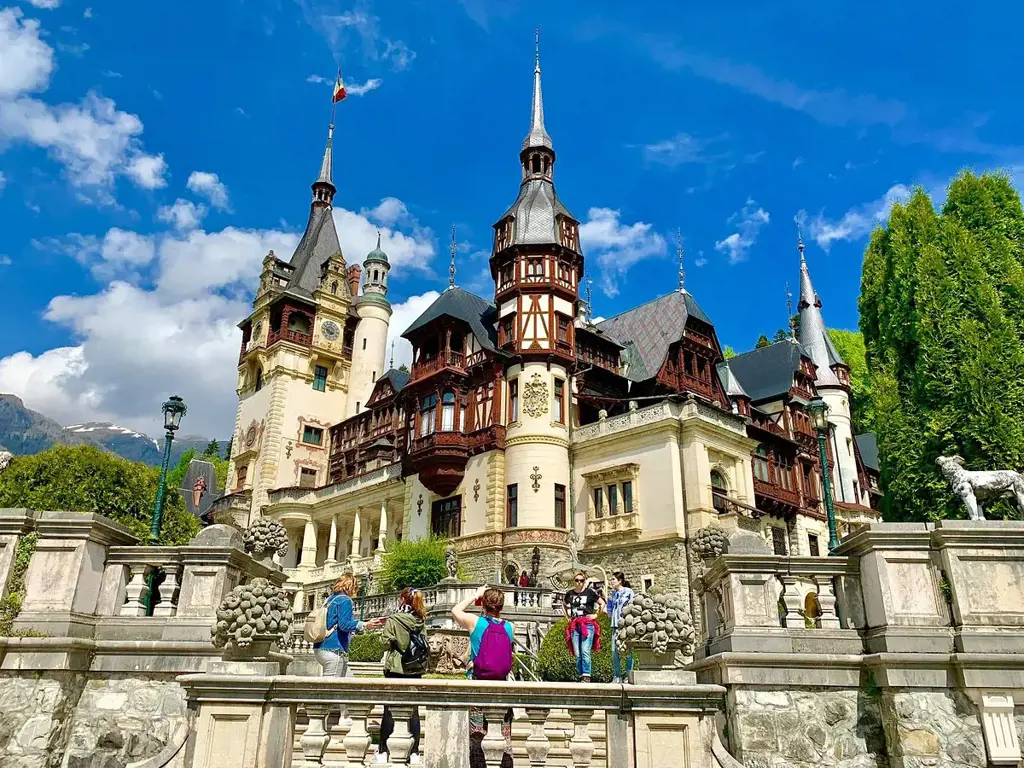
| Characteristic | Description |
|---|---|
| Name | Peleș Castle |
| Type | Castle in Sinaia, Romania |
| Website | Go to website |
| Rating / Review count | 4.7 / 53,541 |
| Address | Aleea Peleșului 2, Sinaia 106100, Romania |
| Phone | +40 244 310 918 |
| Hours | Thursday - opens at 9:15 AM and closes at 5 PM Friday_good_friday - opens at 9:15 AM and closes at 5 PM Saturday - opens at 9:15 AM and closes at 5 PM Sunday_orthodox_easter - opens at 9:15 AM and closes at 5 PM Monday - Closed Tuesday - Closed Wednesday - opens at 9:15 AM and closes at 5 PM |
| Profiles |   |
The castle was designed by the German architect Johannes Schultz and the interior design was done by a team of Romanian and foreign artists. The castle features a mix of styles, including Gothic, Renaissance, and Baroque. The exterior of the castle is adorned with impressive turrets, walls, and carvings. Visitors can stroll around the castle's grounds, which feature terraced gardens, fountains, and statues.
Inside the castle, visitors are greeted with an array of luxurious rooms and halls decorated with intricate wood carvings, stained glass windows, and frescoes. One of the most impressive rooms in the castle is the Grand Armory Hall, which houses an impressive collection of medieval armor and weapons. The castle also features a vast art collection with works by well-known artists such as Gustave Klimt and Franz von Stuck.
The castle has over 160 rooms, and visitors can take guided tours to explore some of the most impressive ones. One of the most beautiful rooms is the Concert Hall, which features stunning wood carvings, stained glass windows, and an ornate organ. The King's Apartments are also worth exploring, as they are elaborately decorated with rich fabrics, antique furniture, and high ceilings.
Overall, Peles Castle is an unforgettable destination that offers visitors a glimpse into the lives of Romania's royal family. It's a perfect blend of architectural elegance and artistic beauty and an excellent place to spend a day exploring the grounds and the various halls of the castle. Whether you're interested in history, architecture, or just looking for an exciting adventure, Peles Castle is a must-visit destination in Transylvania.
12 Fun Things to Do in Lacey, WA
You may want to see also

Corvin Castle
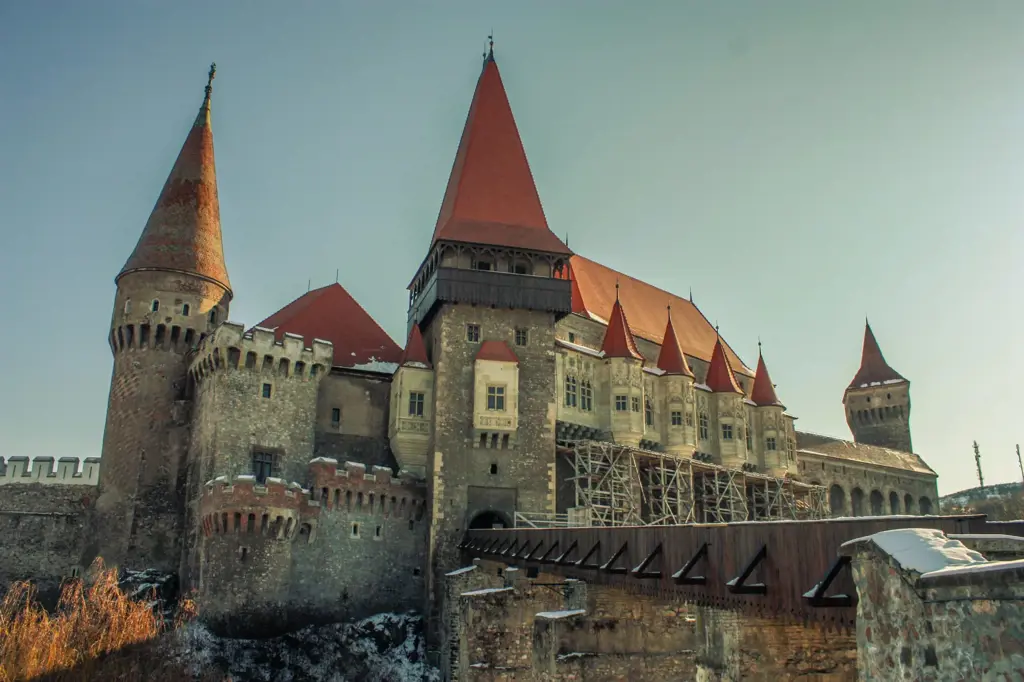
| Characteristic | Description |
|---|---|
| Name | Castelul Corvinilor (Corvins' Castle) |
| Type | Castle in Hunedoara, Romania |
| Website | Go to website |
| Rating / Review count | 4.6 / 36,841 |
| Address | Curtea Corvineștilor nr. 1-3, Hunedoara 331141, Romania |
| Phone | +40 786 048 718 |
| Hours | Thursday - opens at 9 AM and closes at 8 PM Friday_good_friday - opens at 9 AM and closes at 8 PM Saturday - opens at 9 AM and closes at 8 PM Sunday_orthodox_easter - opens at 9 AM and closes at 5 PM Monday - opens at 12 and closes at 8 PM Tuesday - opens at 9 AM and closes at 8 PM Wednesday - opens at 9 AM and closes at 8 PM |
When one thinks of Transylvania, the image of Dracula may come to mind. However, there is more to this Romanian region than just the infamous vampire. One of the most spectacular sites in Transylvania is the Corvin Castle.
Located in the city of Hunedoara, Corvin Castle is a Gothic-style fortress built in the 14th century by John Hunyadi, a famous Hungarian warlord. The castle, also known as Hunyadi Castle or Hunedoara Castle, has a rich history and served as a military stronghold against Turkish invasions. It was later passed on to the Corvin family, who made significant alterations to the castle.
From its unique blackened bastions and the impressive drawbridge, to the grand halls and secret staircases, Corvin Castle is a marvel of medieval architecture. The castle features a large inner courtyard, and its towers offer stunning views of the city and surrounding countryside.
One of the most impressive parts of the castle is the Knights' Hall, also known as the Diet Hall. The hall is adorned with frescoes depicting Hungarian heroes, and the intricate wooden ceiling has survived the test of time. Other notable rooms include the Chapel, the Council Room, and the impressive underground cellars.
Visitors can also explore the castle's torture chamber, which was allegedly used during the Middle Ages. The eerie atmosphere is palpable as visitors walk through the dungeon and see the various torture devices on display.
Throughout the centuries, Corvin Castle was besieged, damaged, and restored. Today, it stands as one of the most impressive castles in Romania and a popular tourist attraction in Transylvania. Visitors can take guided tours of the castle, watch re-enactments, and even attend festivals and concerts held on the castle grounds.
In conclusion, Corvin Castle is a must-see attraction for anyone visiting Transylvania. The castle's rich history and intricate architecture make it a fascinating destination for lovers of history and medieval culture. The castle is a testament to the resilience of those who built it and a reminder of the turbulent times in which it was built. A visit to Corvin Castle is a trip back in time and a chance to experience the majesty and mystery of a Gothic castle in Transylvania.
12 Fun Things to Do in Salina, Kansas
You may want to see also

Sighisoara Citadel
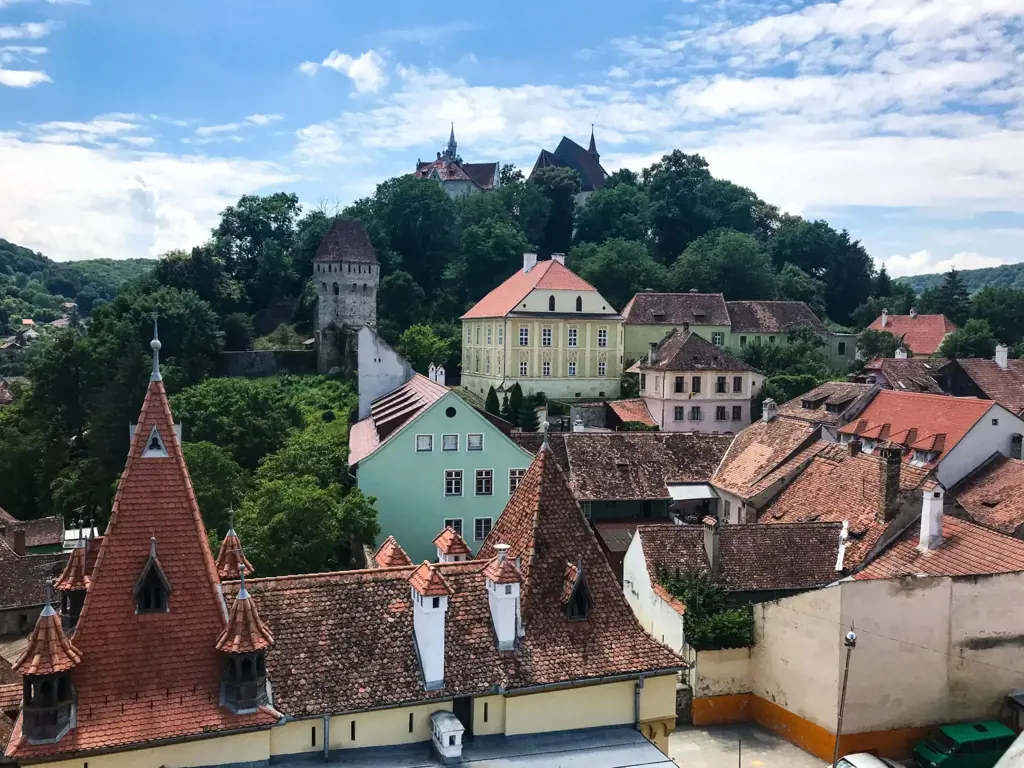
| Characteristic | Description |
|---|---|
| Name | Sighișoara Citadel |
| Type | Fortress in Sighișoara, Romania |
Nestled in the heart of Transylvania lies Sighisoara Citadel, a fortified city that has preserved its medieval architecture and charm. This UNESCO World Heritage Site is located in the Mures County of Romania and is renowned for its stunning beauty and rich cultural heritage.
Founded by German craftsmen and merchants, Sighisoara Citadel dates back to the 12th century and is one of the best-preserved medieval citadels in Europe. It is a masterpiece of medieval architecture with narrow cobblestone streets, colorful houses, and fortified walls that surround the city.
One of the most prominent landmarks in Sighisoara Citadel is the Clock Tower. The tower was built in the 14th century and served as a defensive position for the city. Today, it houses a museum that showcases the history of the citadel and the life of its inhabitants.
Another iconic attraction in Sighisoara Citadel is the Birthplace of Vlad the Impaler. The infamous Dracula was born in the city in the 15th century, and his house has been turned into a museum that offers insights into his life and legend.
Visitors to Sighisoara Citadel can also explore the ancient churches and citadel walls, which offer breathtaking views of the surrounding countryside. The Gothic Church on the Hill is one of the oldest churches in the city, and it offers stunning views of the citadel from the top.
In addition to its stunning architecture and history, Sighisoara Citadel is also a hub of cultural events and festivals. The Medieval Festival, which takes place in July, is a popular event that celebrates the city's medieval legacy with concerts, parades, and medieval-themed games.
Overall, Sighisoara Citadel is a must-visit destination for anyone interested in history, architecture, and culture. Its well-preserved medieval charm, stunning landmarks, and vibrant cultural scene make it a truly unique and unforgettable experience.
13 Fun Things to Do in Gilroy, California
You may want to see also

Biertan Fortified Church
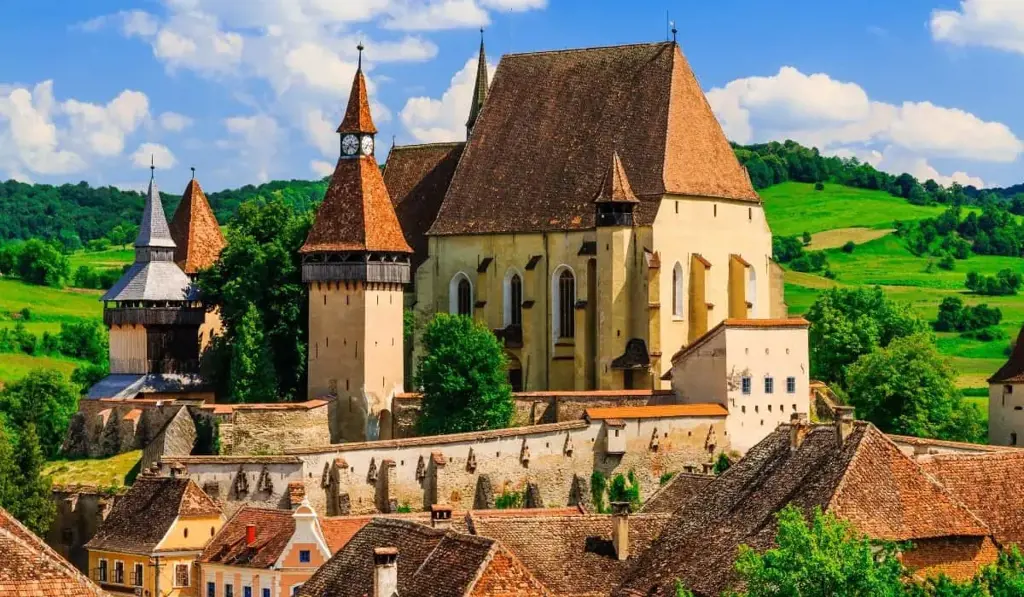
| Characteristic | Description |
|---|---|
| Name | The Fortified Church of Biertan |
| Type | Lutheran church in Berethalom, Romania |
| Rating / Review count | 4.6 / 3,941 |
| Address | Biertan 557045, Romania |
| Phone | +40 269 868 262 |
| Hours | Thursday - opens at 11 AM and closes at 3 PM Friday_good_friday - opens at 11 AM and closes at 3 PM Saturday - opens at 11 AM and closes at 3 PM Sunday_orthodox_easter - opens at 11 AM and closes at 3 PM Monday - Closed Tuesday - opens at 11 AM and closes at 3 PM Wednesday - opens at 11 AM and closes at 3 PM |
Located in the heart of Transylvania, Biertan Fortified Church is one of the most popular tourist destinations in the region. This medieval monument is renowned for its unique architectural style and has been designated as a UNESCO World Heritage Site.
The church was built in the 15th century and served as a place of worship for German-speaking settlers in the area. It is situated on a hill overlooking the village of Biertan, and was designed to withstand assaults from invaders. The walls of the church are several meters thick, and the entrance is protected by a heavily fortified gate that still stands today.
One of the most impressive features of the Biertan Fortified Church is its interior. The church is adorned with beautiful frescoes depicting religious scenes, and the altar is a masterpiece of Gothic art. The pulpit is also noteworthy for its elaborate carvings and intricate details.
Another unique aspect of the church is its sacristy, which was built in the 16th century. This small room is located behind the altar and was designed to store precious religious artifacts. What makes it special is the fact that it is accessible only through a secret door that is activated by a mechanism with seven locks. Legend has it that the keys to the locks were held by seven different officials in the church, ensuring that no one person could access the room alone.
Visitors to the Biertan Fortified Church can take a guided tour of the building and learn about its history and architecture. They can also climb up to the bell tower to enjoy stunning views of the surrounding landscape.
In addition to its historical significance, the Biertan Fortified Church is also known for its role in promoting interfaith dialogue. In 2016, it hosted a meeting between representatives of the Orthodox, Protestant, and Catholic churches in Transylvania, where they discussed ways to improve cooperation and understanding among different religious communities.
Overall, the Biertan Fortified Church is a must-visit destination for anyone interested in history, architecture, and religious art. Its unique features and fascinating history make it a true gem of Transylvania.
14 Must-Do Activities in Ohio City
You may want to see also

Turda Salt Mine
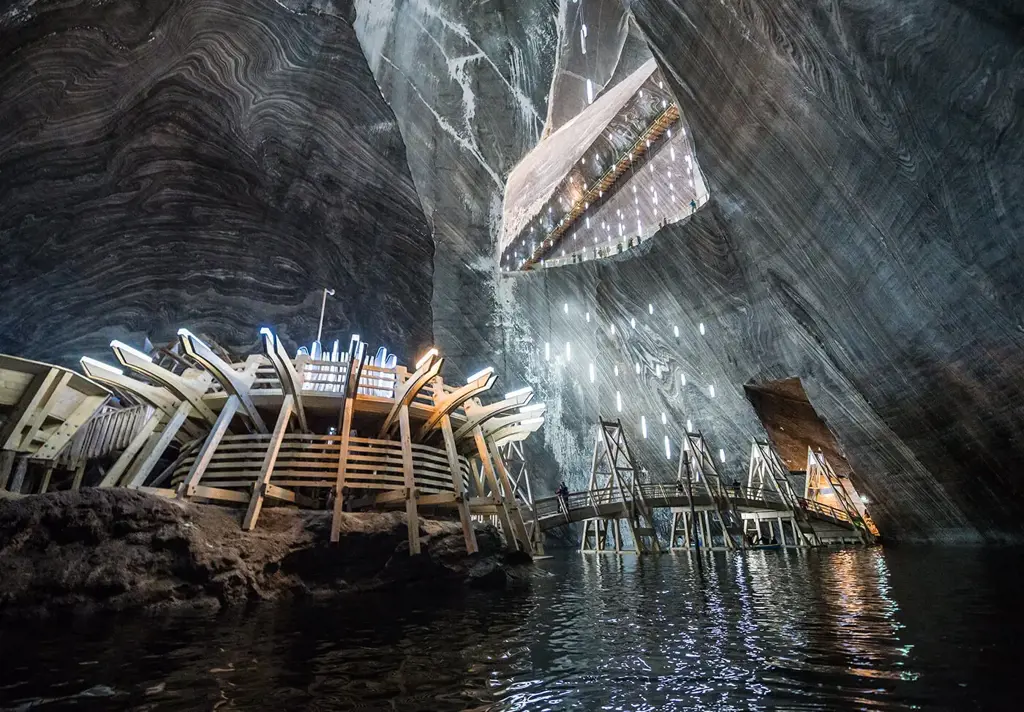
| Characteristic | Description |
|---|---|
| Name | Salina Turda |
| Type | Mine in Turda, Romania |
| Website | Go to website |
| Rating / Review count | 4.6 / 25,558 |
| Address | Aleea Durgăului 7, Turda 401106, Romania |
| Phone | +40 364 260 940 |
| Hours | Thursday - opens at 9 AM and closes at 5 PM Friday_good_friday - opens at 9 AM and closes at 5 PM Saturday - opens at 9 AM and closes at 5 PM Sunday_orthodox_easter - opens at 9 AM and closes at 5 PM Monday - opens at 9 AM and closes at 5 PM Tuesday - opens at 9 AM and closes at 5 PM Wednesday - opens at 9 AM and closes at 5 PM |
| Profiles |  |
Nestled in the heart of Transylvania, Romania, is an underground wonderland waiting to be explored: the Turda Salt Mine. This historical site has been transformed into a unique and exciting tourist attraction, offering visitors an unforgettable experience unlike any other.
The Turda Salt Mine has a rich history dating back to the Roman Empire, when salt was extracted from this location. Throughout the centuries, the mine was expanded and modernized, becoming one of the largest salt mines in Europe by the 1800s. The mine was eventually closed in 1932, but it was reopened to visitors in the 1990s as a tourist destination.
One of the most impressive features of the mine is its size. The mine spans over 42 hectares, with 13 galleries and chambers that reach depths of up to 120 meters. Visitors can explore this vast underground network by foot, descending down a long staircase into the depths of the mine.
One of the most unique attractions in the Turda Salt Mine is the giant Ferris wheel, situated in the heart of the mine's largest chamber, called the "Echoes Room." This chamber is so large that it can hold a 1,000-seat amphitheater, and its acoustics are so perfect that even a whisper can be heard throughout the room. The Ferris wheel offers an incredible view of this magnificent chamber, and visitors can enjoy a ride on the wheel while admiring the stunning surroundings.
In addition to the Ferris wheel, the Turda Salt Mine also features a mini golf course, a bowling alley, and a lake where visitors can take boat rides. There are also several areas for relaxation, including a salt beach and a salt spa. The mine's constant temperature of around 10-12 degrees Celsius makes it an ideal place to escape from the hot summer sun or the cold winter weather.
The Turda Salt Mine is a must-visit attraction for anyone traveling to Transylvania. With its rich history and unique features, it provides a one-of-a-kind experience that cannot be found anywhere else. Whether you're interested in history, architecture, or simply looking for a fun day out, the Turda Salt Mine is sure to leave a lasting impression.
12 Fun Things to Do in Effingham, IL
You may want to see also

Sinaia Monastery
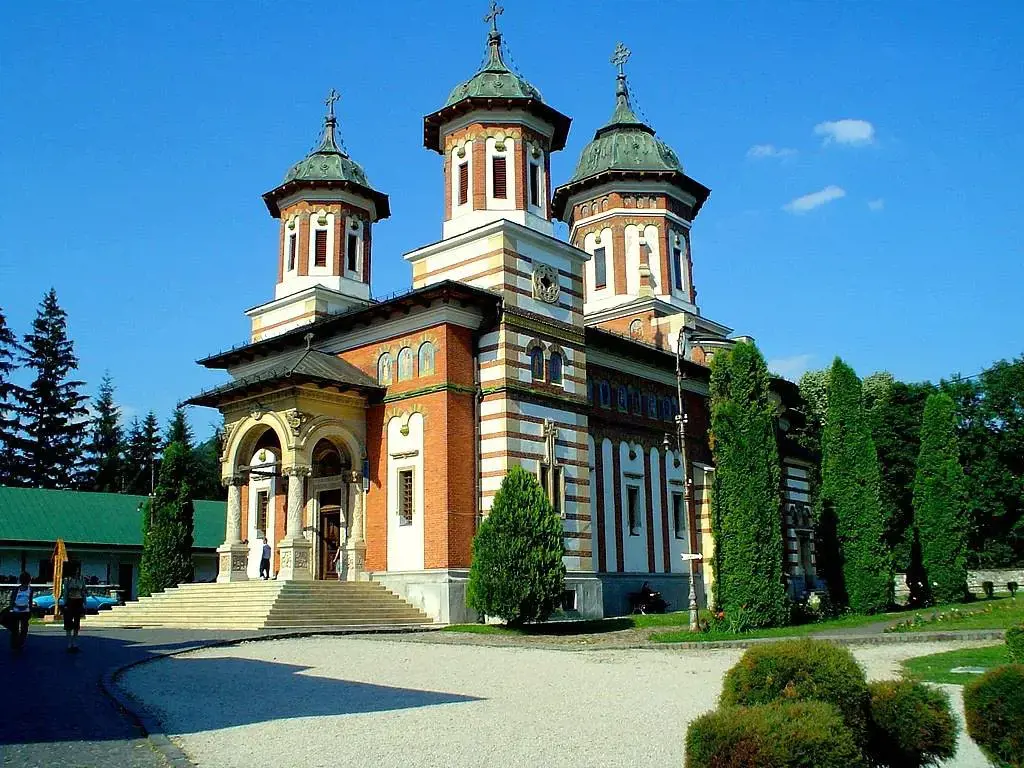
| Characteristic | Description |
|---|---|
| Name | Sinaia Monastery |
| Type | Monastery in Sinaia, Romania |
| Website | Go to website |
| Rating / Review count | 4.7 / 10,122 |
| Address | Strada Mănăstirii 2, Sinaia 106100, Romania |
| Phone | +40 244 314 917 |
| Hours | Thursday - opens at 10 AM and closes at 3 PM Friday_good_friday - opens at 10 AM and closes at 3 PM Saturday - opens at 10 AM and closes at 3 PM Sunday_orthodox_easter - opens at 10 AM and closes at 3 PM Monday - opens at 10 AM and closes at 3 PM Tuesday - opens at 10 AM and closes at 3 PM Wednesday - opens at 10 AM and closes at 3 PM |
Nestled in the picturesque town of Sinaia, Transylvania, Sinaia Monastery is a notable religious site that attracts visitors from all around the world. Dating back to the 17th century, the monastery is not only a revered spiritual landmark but also an architectural masterpiece.
The monastery was founded by Prince Constantin Brancoveanu in 1695, and it served as a spiritual hub for the Romanian Orthodox Church. The architectural style of the monastery is a blend of Byzantine and Baroque elements, which give it a unique grandeur that is both charming and imposing.
One of the most striking features at Sinaia Monastery is the bold, red-brick wall that surrounds the property. The wall was built in the 18th century, and it served as a form of protection from foreign invaders during wars. Visitors are welcomed through the grand entrance gate, which is adorned with intricate carvings and decorations.
The main church at Sinaia Monastery is dedicated to the Assumption of the Virgin Mary and is the focal point of the convent. The interior of the church is adorned with frescoes and intricate paintings, which were created by some of the most talented artists of the time. The altar is made of heavy brass and is adorned with detailed carvings and precious stones.
Apart from the church, Sinaia Monastery also boasts a museum, which houses a collection of religious artifacts, icons, and other works of art. The valuable collection serves as a testament to the cultural and spiritual heritage of Transylvania.
Visitors can also appreciate the natural beauty of the area surrounding Sinaia Monastery. The monastery is located in the Prahova Valley, which is renowned for its stunning scenery and picturesque landscapes. The valley is surrounded by the Carpathian Mountains, which provide a dramatic backdrop that is sure to leave a lasting impression on visitors.
In conclusion, Sinaia Monastery is a must-visit destination for anyone interested in exploring the cultural, historical, and spiritual heritage of Transylvania. Its grandeur, history, and natural beauty make it a popular destination for both locals and tourists alike.
12 Fun and Fascinating Things to Do in Hampton Beach, New Hampshire
You may want to see also

The Merry Cemetery in Maramures
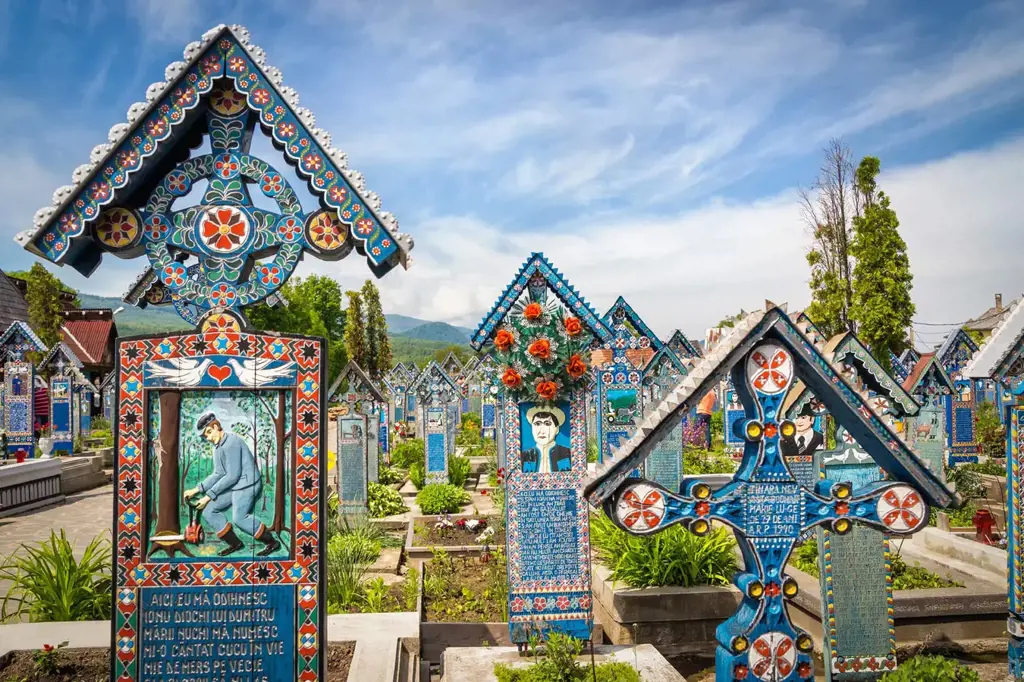
| Characteristic | Description |
|---|---|
| Name | Merry Cemetery |
| Type | Cemetery in Săpânța, Maramureș, Romania |
| Website | Go to website |
| Rating / Review count | 4.6 / 1,388 |
| Address | Săpânța 437305, Romania |
| Hours |
The Merry Cemetery is located in the village of Sapanta in the Maramures region of Romania. The cemetery was established in 1935 by the local artist and artisan, Stan Ioan Patras. He was inspired to create the cemetery by the traditional wooden grave markers that were common in the region. The grave markers were usually simple crosses with a painted image of the deceased, their name, and a brief epitaph.
Patras decided to take this tradition to new heights and began creating highly detailed and artistic grave markers that depicted the life, occupation, and character of the deceased. Each grave marker is a unique work of art, featuring bright colors and intricate carvings. The artist also included a short poem or epitaph on each marker, written in a humorous and sometimes irreverent style.
Many visitors come to the cemetery to marvel at the artwork and read the clever epitaphs. Some of the epitaphs are quite amusing, such as "Here lies my poor wife, rest in peace, she preferred drinking to housework" or "This cross marks the spot of a stubborn and stingy man who wasted all his money on wine and women". The cemetery is a celebration of life and a reminder to enjoy it while we can.
The Merry Cemetery has become a popular destination for tourists visiting Transylvania. It has been featured in numerous travel guides and is considered one of the most unusual cemeteries in the world. In 1999, the cemetery was awarded the Europa Nostra Prize for its contribution to Europe's cultural heritage.
In conclusion, the Merry Cemetery in Maramures is a unique and whimsical tourist attraction in the heart of Transylvania. It is a celebration of life, a reminder of the importance of enjoying every moment, and a testament to the creativity and artistic talent of the local people. If you are traveling to Transylvania, the Merry Cemetery is a must-visit destination.
14 Fun Things to Do in Key West at Night
You may want to see also

The Transfagarasan Highway
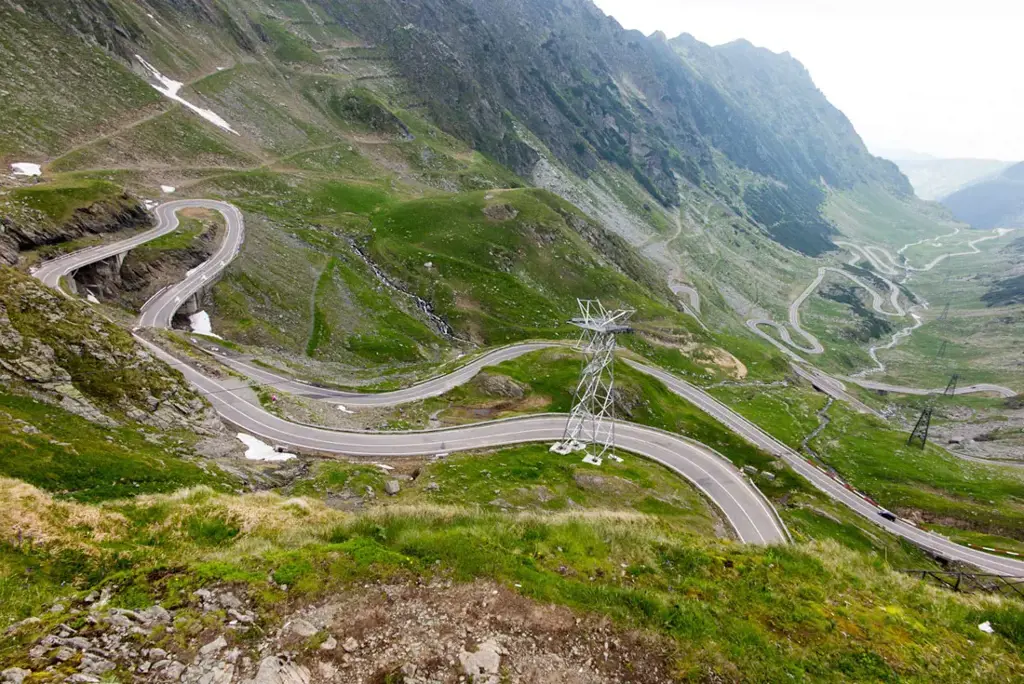
The road cuts through the Fagaras Mountains, the highest range in Romania, crossing over the Transfagarasan Pass at an altitude of 2,042 meters. This stretch of the highway is only accessible during the summer months from June to October as it is buried under snow the rest of the year.
The construction of the highway began in 1970 under the direction of Nicolae Ceausescu, Romania’s communist leader at that time. The project employed more than 6,000 people and took five years to complete, with workers carving the road through the rocky terrain using dynamite and bulldozers.
Today, the Transfagarasan Highway is a popular tourist attraction, with thousands of visitors traveling from all over the world to experience its breathtaking scenery. The route offers stunning views of the mountains, including the Balea Lake, an artificial glacier lake and a popular tourist destination.
The highway is also famous for its numerous hairpin turns, making the driving experience exhilarating and challenging. Local vendors line the streets, offering souvenirs and traditional treats such as mici (ground meat sausages) and covrigi (pretzels).
Despite its attraction to tourists, the Transfagarasan Highway is not for the faint-hearted. The road is narrow and winding, and drivers must exercise caution when navigating its many curves and turns. Due to its high altitude, weather conditions can be treacherous, with fog, snow, and ice affecting road conditions.
In conclusion, The Transfagarasan Highway is an engineering and architectural masterpiece that merges function and beauty, a must-see destination for adventurous visitors to Romania. It is a fantastic way to discover the beauty of the country as well as the local culture. In short, a drive on the Transfagarasan Highway is an experience one will never forget.
13 Fun Things to Do in Royal Oak, Michigan
You may want to see also

Bicaz Gorges
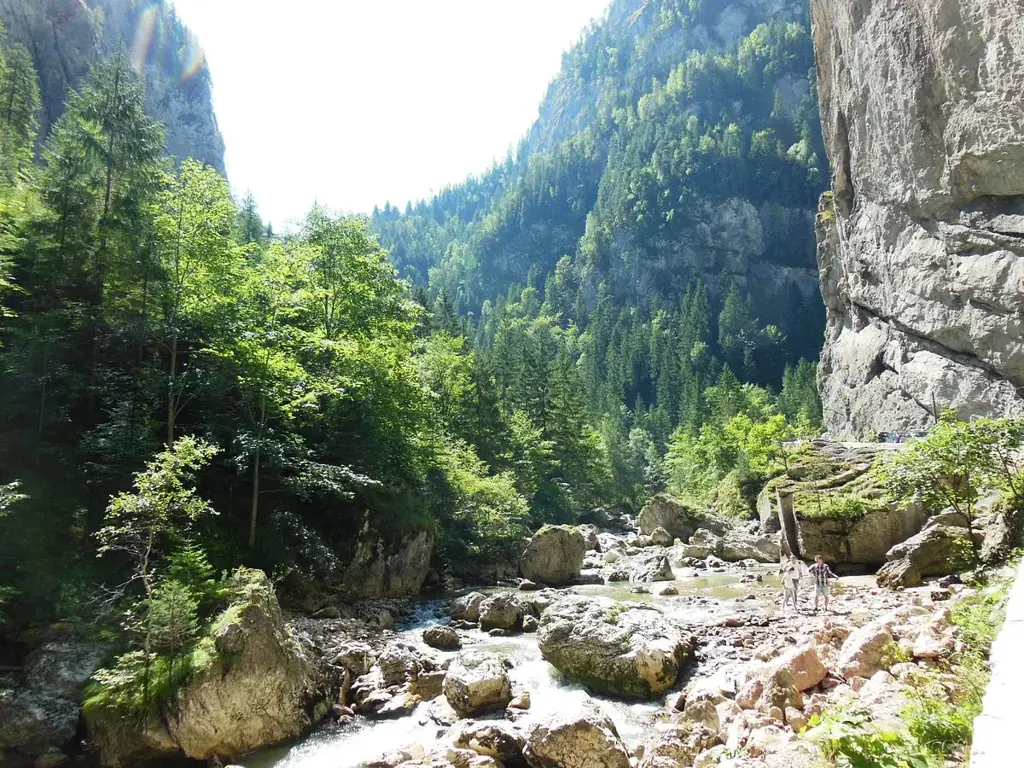
If you're ever in Transylvania, make sure to add Bicaz Gorges to your itinerary. These stunning gorges are a natural wonder of Romania, located in the eastern Carpathian Mountains.
The Bicaz Gorges were formed over millions of years by erosion and the movement of tectonic plates. The gorges span 8 kilometers long and the surrounding cliffs reach heights of up to 300 meters. There are several hiking trails available that lead through the gorges and offer stunning views of the natural landscape.
One of the most popular activities in Bicaz Gorges is taking a scenic drive along the winding road that cuts through the cliffs. This road is known as the Transfagarasan Highway, which was originally built during the communist era for military purposes. It has since been transformed into a scenic drive, giving visitors the chance to admire the impressive natural surroundings.
As you explore the gorges, you'll discover numerous caves and tunnels formed by the rushing waters of the Bicaz River. These caves are home to a variety of bats and are popular spots for adventurous rock climbers and spelunkers.
There are also several beautiful lakes in the area, with the most famous being Lacul Rosu (Red Lake). This lake was formed in 1837, when a massive rockfall blocked the Bicaz River, creating a natural dam. The rust-colored sediment on the lake's surface gives it its unique red hue.
Overall, Bicaz Gorges is a must-see destination for travelers seeking natural beauty and adventure. Whether you prefer hiking, driving, or simply admiring the stunning scenery, Bicaz Gorges will not disappoint.
13 Amazing Things to Do in St Louis for Memorial Day Weekend
You may want to see also

Brasov’s Black Church
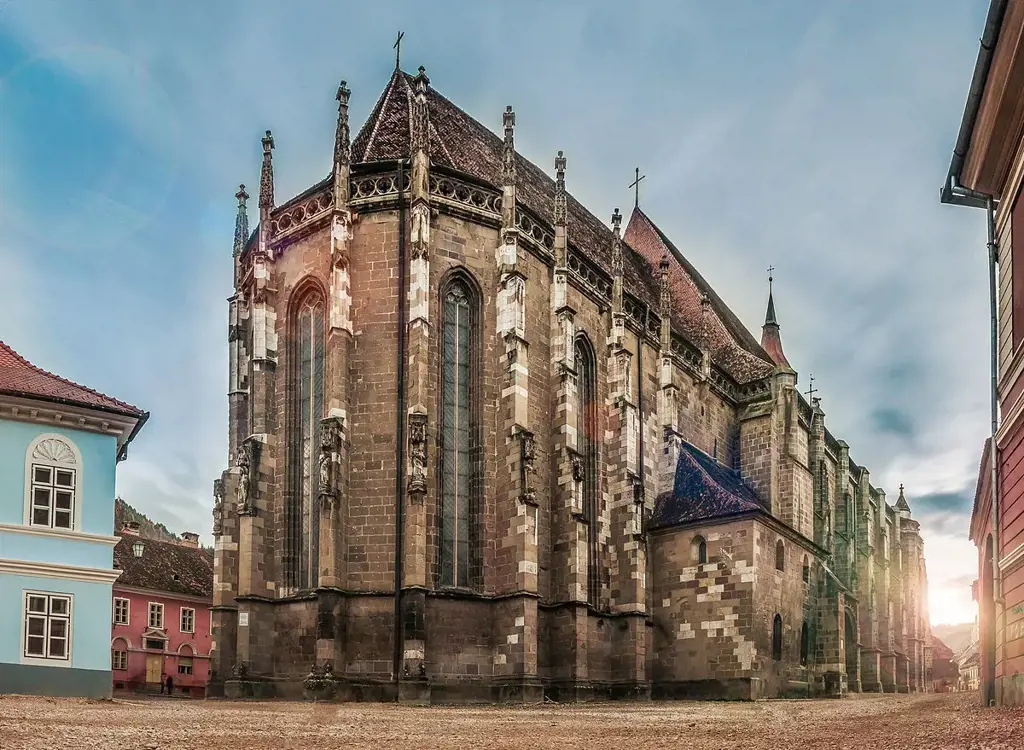
| Characteristic | Description |
|---|---|
| Name | The Black Church |
| Type | Church in Brașov, Romania |
| Website | Go to website |
| Rating / Review count | 4.6 / 1,686 |
| Address | Curtea Johannes Honterus 2, Brașov 500025, Romania |
| Phone | +40 772 253 781 |
| Hours | Thursday - opens at 10 AM and closes at 6:45 PM Friday_good_friday - opens at 10 AM and closes at 6:45 PM Saturday - opens at 10 AM and closes at 6:45 PM Sunday_orthodox_easter - opens at 12 and closes at 6:45 PM Monday - opens at 12 and closes at 6:45 PM Tuesday - opens at 10 AM and closes at 6:30 PM Wednesday - opens at 10 AM and closes at 6:45 PM |
| Profiles |  |
Transylvania, the region of Romania known for its stunning landscapes and ancient castles, is also home to numerous historical landmarks. Among the most popular destinations for tourists is Brasov’s Black Church, a Gothic-style structure that dominates the city’s skyline.
The Black Church, also known as Biserica Neagră, was built in the 14th and 15th centuries and got its name after being damaged in a fire in 1689, which left its walls blackened by smoke. Along with the city’s fortifications, the church served as a bastion against the Ottoman Empire’s invasion, and for many decades it was the largest place of worship between Vienna and Istanbul.
The church offers visitors many striking features, including a stunning collection of Oriental carpets that date back to the 17th and 18th centuries as well as a mechanical organ that is among the largest in southeastern Europe. The church's interior is adorned with numerous prominent statues and intricate wood carvings, such as the centerpiece statue of Christ on the altar.
However, perhaps the most impressive feature of the Black Church is its bell tower, the largest in Romania, which houses a 6-ton bell that chimes on special occasions, such as New Year’s Eve and religious holidays. Visitors can also climb the tower's winding staircase to reach the top and get a panoramic view of the city and its surroundings.
Aside from its architectural beauty, the Black Church serves as a symbol of resilience for the people of Brasov. Despite facing numerous challenges throughout its history, including invasions by foreign armies and natural disasters, the church has remained a testament to the strength and unwavering faith of the city’s inhabitants.
Overall, the Brasov’s Black Church is a must-see attraction for anyone visiting Transylvania. Its stunning Gothic-style architecture, intricate adornments, and fascinating history make it an unforgettable experience.
13 Fun Things to Do in Englewood, FL
You may want to see also
Frequently asked questions
- Some popular tourist destinations in Transylvania include Bran Castle, the medieval city of Sighisoara, the fortified city of Brasov, and the Turda Salt Mine.
- Transylvania offers a variety of outdoor activities for tourists, such as hiking in the Carpathian Mountains, exploring the countryside on horseback, visiting the Saxon villages on cycling tours, and taking part in wildlife watching tours.
- Transylvania is known for its vibrant cultural events and festivals, such as the medieval festival in Sighisoara, the Harvest Festival in Brasov, the Transylvanian Wine and Jazz Festival, and the ROMCOM festival in Cluj-Napoca featuring Romanian and international comedies.
- Transylvanian cuisine is a fusion of Hungarian, Romanian, and Saxon influences, with dishes such as the goulash soup, sarmale (stuffed cabbage rolls), paprikas (meat stew with paprika), sweet and savory strudels, and chimney cakes. Tourists should also try the local cheese and meats, such as telemea cheese and mititei (grilled minced meat rolls).


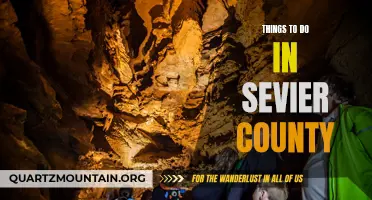



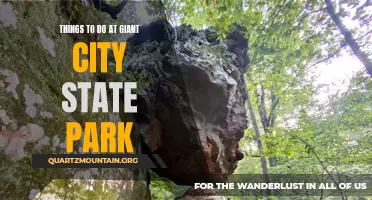
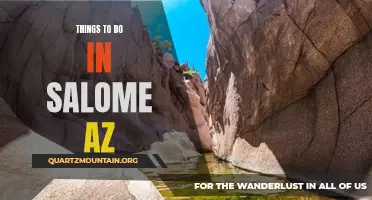
5 Comments
Marilyn Best
Qasim Olson
Lazar Odonnell
AuthorMaxwell Lindsey
Julia May
Author